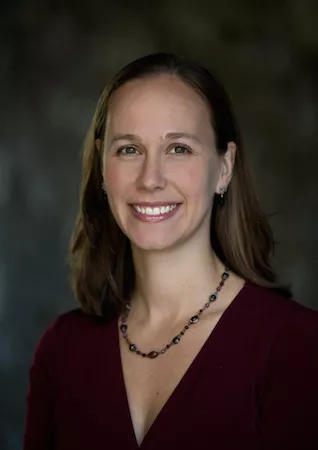Statistician Lynne Steuerle Schofield '99 Helps Shed New Light on Mortality Data

A paper co-researched by Associate Professor of Statistics Lynne Steuerle Schofield '99 casts light on anomalies in old age mortality estimates.
In “The Methuselah Effect: The Pernicious Impact of Unreported Deaths on Old Age Mortality Estimates,” [pdf], Schofield and her co-authors explore paradoxical findings along racial and ethnic lines, which they attribute to missing death records. In highlighting the paper, the National Bureau of Economic Research's (NEBR) Bulletin on Aging and Health [pdf] commends the team for “[offering] a fresh perspective” on an issue that has puzzled demographers.
“I’m really excited to have the paper published and honored that NBER wanted to highlight it,” says Schofield, whose general research focus is latent variable analysis. “I hope it will generate a lot of discussion and spur us to write a follow-up paper!”
In particular, Schofield and her co-authors examined the phenomena of “The Hispanic paradox” and “the black-white crossover mortality.” The former refers to statistics showing Hispanics and Latino Americans with mortality rates similar or lower to those of non-Hispanic whites, the latter to blacks having higher mortality rates than whites at younger ages before those figures reverse at older ages.
These figures are paradoxical in light of socioeconomic differences between these groups, generating curiosity in and beyond the scientific community. But Schofield and her co-authors say that can be explained by missing data, since missing death records are more common for blacks and Hispanics in Social Security Administration data and vital statistics data.
“While both of these data sets are generally quite good, the rates of missingness are different by race and ethnicity,” she adds. “So, it is always important to remember where your data comes from and consider the types of biases that might be in any data set.”
Schofield primarily researches measurement error, in the area of psychometics, “which you can think of as the study of educational and psychological measurement,” she says. Her co-authors sought that expertise in preparing to study what the team later dubbed “The Methuselah Effect.”
The researchers also note there may be other cross-group differences in error rates that need to be incorporated in mortality models, and that the possible misreporting of age in surveys merits a closer look.
“A great deal more work lies ahead for demographers interested in the accurate assessment of mortality at older ages,” write Schofield and her co-authors, who gathered for “a winter camp” in North Carolina to continue the effort.



